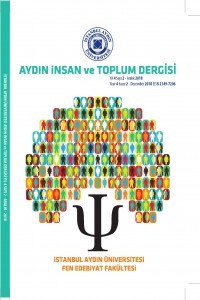The Effect of Circumcision on the Mental Health of Children Running Head: Circumcision and Mental Health
To investigate the effects of circumcision on children’s behavioral characteristics, de-pression and anxiety levels. 35 boys, aged between 6-11, who were scheduled to be circumcised were included in the study. Child Depression Inventory and Stait Trait Anxiety Inventory for Children were administered to the children and Child Behaviour Checklist (4/18) was administered to their parents one week before the circumcision and one month and six months after the circumcision. The data were evaluated by SPSS 18 program. Total, internalization and externalization problem scores, anxiety/depression, delinquent behavior, attention problems subscale scores, one month and six months after circumcision were signifi-cantly lower when compared to the scores before the circumcision. Withdrawal, somatic com-plaints and aggressive behavior subscale scores six months after circumcision were significantly lower when compared to the period before circumcision. Although state anxiety and depression scores one month after circumcision were improved significantly, by the end of six months, there was no significant difference in terms of depression, state and trait anxiety scores. When evaluating the psychological consequences of a procedure which has historical, religious and cultural significance such as circumcision, social factors should also be taken into consideration. The positive meanings attributed to the circumcision in Turkey may reduce the negative effects of the operation on children’s mental health. The results show that the circumcision does not increase depression and anxiety levels and behavioral problems of the children in Turkey.
Anahtar Kelimeler:
Circumcision, child, behavioral problems, depression, anxiety
___
- American Academy of Pediatrics (AAP) (2012). Task Force on Circumcision. Circumcision policy statement. Pediatrics; 130 (3): 585–6. Bensley, A. G. & Boyle, G. J. (2001). Physical, sexual and psychological effects of male infant circumcision: an exploratory survey. Understanding circumcision: A multidisciplinary approach to a multi-dimensional problem. Eds: Denniston GC, Hodges FM, Milos MF.; New York, Plenum: 207-31. Bigelow, J. (1995). The Joy of Uncircumcising. Exploring Circumcision: History, Myths, Psychology, Restoration, Sexual Pleasure, and Human Rights. Hourglass Book. Boyle, G., Goldman, R., Svoboda, S. T. & Fernandez, E. (2002). Male circumcision: Pain, travma, psychosexual sequelae. J Health Psychol; 329-43. Cansever, G. (1965). Psychological effects of circumcision. Brit J Med Psychol; 321-31. Dekkers, W., Hoffer, C. & Wils, J. P. (2005). Scientific contribution, bodily integrity and male and female circumcision. Med Health Care Philos; 8(2): 179-91. Denniston, G. C. (1999). An analysis of circumcision advocacy. Male and Female Circumcision, Medical, Legal and Ethical Considerations in Pediatric Practice. Eds: Denniston GC, Hodges FM, Milos MF; 221-40. Dumenci, L., Erol, N., Achenbach, T. M. & SimSek, Z. (2004). Measurement structure of the Turkish translation of Child Behavior Checklist using confirmatory factor analytic approaches to validation of syndromal constructs. J Abnorm Child Psych; (32), 337-42. Dumont, Y. & Quirion, R. (2014). Neuropeptide Y pathways in anxietyrelated disorders. Biol Psychiatry; 76(11):834-5. Frisch, M., Aigrain, Y., Barauskas, V., Bjarnason, R., Boddy, S. A., Czauderna, P. et al. (2013). Cultural bias in the AAP’s 2012 technical report and policy statement on male circumcision. Pediatrics; 131: 796800. Goodman, J. (1999). Jewish circumcision: an alternative perspective. BJU International; (Suppl) (82) 1: 22-7. Goldman, R. (1999). The psychological impact of circumcision. BJU Int; 83(1): 93–102. Goldman, R. (1997). Circumcision: The hidden trauma. How an American Cultural Practice Affects Infants and Ultimately Us All. Vanguard Publishers. Karadag, M. A., Cecen, K., Demir, A., Kivrak, Y., Bagcioglu, M., Kocaaslan, R. et al. (2015). SmartClamp circumcision versus conventional dissection technique in terms of parental anxiety and outcomes: A prospective clinical study. Can Urol Assoc J; 9(1-2): 10-3 doi: 10.5489/cuaj.2131. Kovacs, M. (1985). The Children’s Depression lnventory (CDl). Psychopharmacol Bull; (21): 995-98. Maguire, P. & Parkes, C. M. (1998). Coping with loss: Surgery and loss of body parts. Brit Med J; 1086-88. Menage, J. (1999). Post traumatic stress disorder after genital medical procedures. Male and Female Circumcision, Medical, Legal and Ethical Considerations in Pediatric Practice. Eds: Denniston GC., Hodges FM, Milos MF; 215-9. Oy, B. (1991). Depression scale for children: A study of validity and reliablility. Turk J Psych; (2): 132-36. Ozusta, S. (1995). Turkish standardization, reliability and validity of State Trait Anxiety Inventory for children. Turk J Psychol; (10) :32-44. Ozturk, O. (1973). Ritual circumcision and castration anxiety. Psychiatry; 36(1): 49–59 Price, C. (1999). Male non-theraphotic circumcision. The legal and ethical issues. Male and female Circumcision. Medical, legal and ethical considerations in pediatric practice. Eds. Denniston GC, Hodges FM, Milos MF; 425-55. Ramos, S. & Boyle, G. J. (2001). Ritual and medical circumcision among Filipino boys: Evidence of post-traumatic stress disorder. Understanding circumcision: A multidisciplinary approach to a multi-dimensional problem. Eds: Denniston GC, Hodges FM, Milos MF. New York, Plenum; 253-70. Sahin, F., Beyazova, U. & Akturk, A. (2003). Attitudes and practices regarding circumcision in Turkey. Child Care Heath Dev; 275-80. Sari, N., Buyukunal, C. & Zulfikar, B. (1996). Circumcision ceremonies at the Ottoman Palace. J Pediatr Surg; 920–4. Spielberger, C. D. (1973). Preliminary Manuel for the State-Trait Anxiety Inventory for children. Palo Alto: Consulting Psychologists Press. Taddio, A., Katz, J., Ilersich, A. L. & Koren, G. (1997). Effect of neonatal circumcision on pain response during subsequent routine vaccination. Lancet; 349: 599–603. Tractenberg, M. (1999). Psychoanalysis of circumcision. Male and Female Circumcision, Medical, Legal and Ethical Considerations in Pediatric Practice. Eds: Denniston GC, Hodges FM, Milos MF; 209-14. World Health Organization (WHO). (2006). Male circumcision: global trends and determinants of prevalence, safety and acceptability. http:// whqlibdoc.who.int/ publications/2007/9789241596169_eng.pdf. Aviable at: 06.28.2018. Zoske, J. (1998). Male circumcision: A gender perspective. J Mens Stud; 6(2): 189-208.
- ISSN: 2149-7206
- Yayın Aralığı: Yılda 2 Sayı
- Başlangıç: 2015
- Yayıncı: İstanbul Aydın Üniversitesi
Sayıdaki Diğer Makaleler
Evli Bireylerde Bağlanma Stiller ve Bilişsel Esnekliğin İlişki Doyumuna Etkisi
İpek TOKSÖZ, Şahide Güliz KOLBURAN
Fiziksel-Sözel Şiddet Davranışı ve Dürtüsellik Arasında Öfkenin Aracılık Etkisinin İncelenmesi
Zeynep Pınar COHEN, M. Fatih YAVUZ
Üniversite Öğrencilerinin Mutluluk, Psikolojik Sağlamlık ve Öz Yeterlik Düzeyleri Arasındaki İlişki
